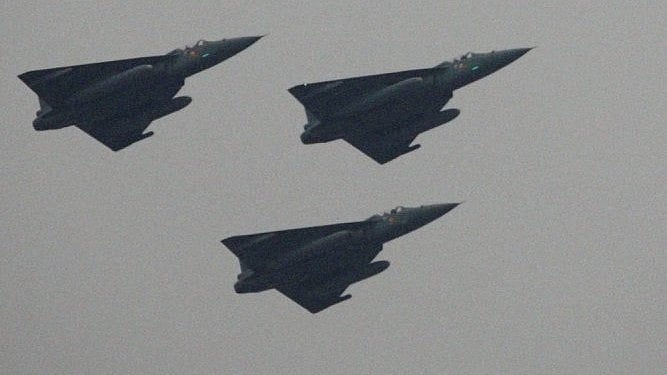
Representative image.
Bengaluru: The upcoming Light Combat Aircraft (LCA) MK2 will have two new mounted sensors, which will detect threats and invoke countermeasures, said a scientist at the Defence Research and Development Organisation (DRDO).
The two new sensors — Missile Approach Warning System (MAWS) and Infrared Search and Track System (IRST) — are developed by the Instruments Research and Development Establishment (IRDE) Dehradun. The IRDE is part of the DRDO.
Nikhil Kumar, Scientist E at IRDE, told DH that these two sensors are the major components that set apart the new MK2 from the LCA MK1.
While the MAWS provides spherical coverage around the aircraft for autonomous detection, tracking, and automatic cue generation for approaching missiles, the IRST uses a passive IR sensor to detect and track airborne threats to provide target data for countermeasures, according to Kumar. He said that both the sensors are electro-optical sensors.
The IRST is a passive radar which is a substitute for normal radars. Unlike the normal radars, which emit radiation to detect potential threats, the IRST reads the energy and IR radiations around the aircraft and generates situational awareness.
“A missile is a heat source and radiates huge amounts of energy. The IRST maps the heat source and has a range of 100 km. It alerts the pilot to initiate action,” Kumar explained.
The MAWS works on a distributed aperture concept which has a capability of covering the field of view of a sphere or 360 degree. MAWS seamlessly detects multiple threats and has a low false alarms record. It not only offers a high probability of detection but also initiates automatic countermeasure cueing in response, according to Kumar.
The MAWS and IRST are in the trial stage and will be completed by December this year. According to Kumar, six MAWS will be mounted on different parts of the MK2, and IRST will be on the front of the aircraft.
According to a different source, the aircraft could be inducted anytime in 2026.